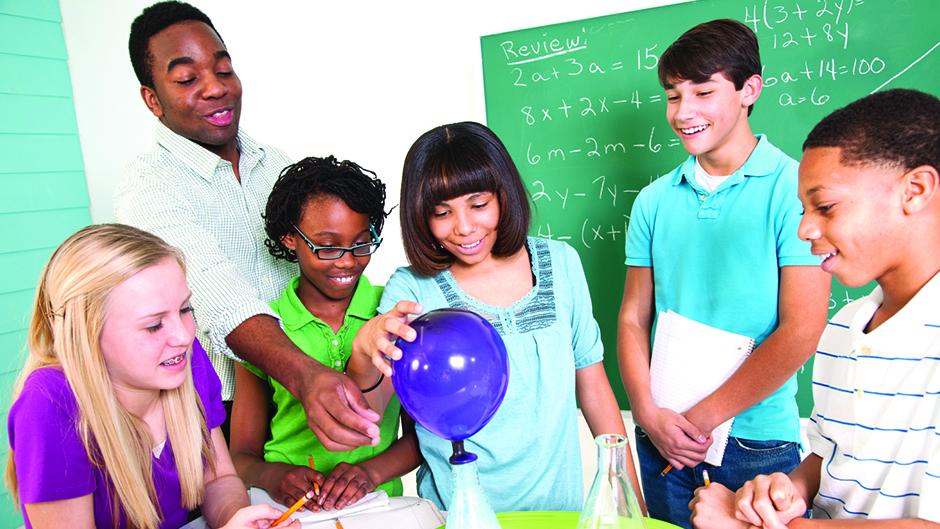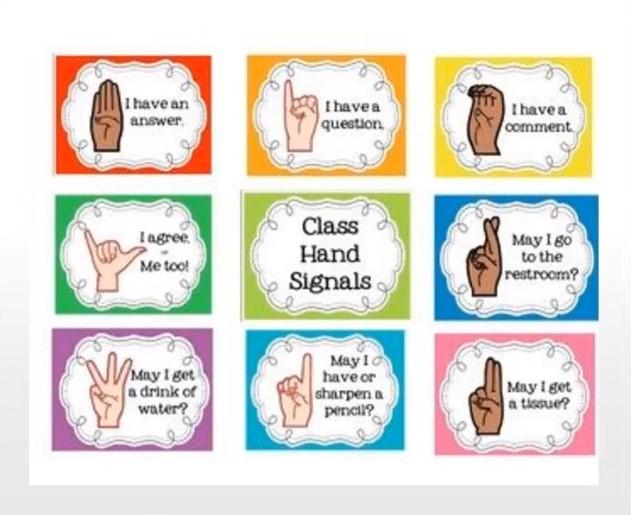Manage Your Class
Keys to Classroom Management
By Gail Snider and Jahana Martin, SREB
 Good classroom management is about more than keeping students quiet and tamping down on the chaos. It’s about forming relationships and creating a classroom environment in which students are engaged, respectful and feel respected. It’s about creating a safe space that empowers each student to learn and participate fully in the classroom.
Good classroom management is about more than keeping students quiet and tamping down on the chaos. It’s about forming relationships and creating a classroom environment in which students are engaged, respectful and feel respected. It’s about creating a safe space that empowers each student to learn and participate fully in the classroom.
How can teachers tackle classroom management issues and positively impact student achievement? Riesa Blackwell and Ginger Tedder of Mississippi State University Research & Curriculum Unit share easy-to-implement strategies to achieve effective classroom management and increase student success at the secondary school level.
- Teach behavior. It’s integral to successful classroom management. “A student may have behavior in one class that you do not want in your class. If you want specific behavior, you have to teach it,” says Blackwell.
- Set high expectations and promote student engagement by giving students choice and positions of responsibility. Tedder contends teachers should “make sure your expectations are high, consistent and expressed clearly to your students. Make sure they have a say in your process to create rules and norms in your classroom.”
 Build relationships with students. “One of the best responses to misbehavior in the classroom is to build a relationship … and try to learn about [students],” insists Tedder. Understanding the symptoms of bad behavior is also key. Tedder says some reasons for misbehavior are a desire for attention or control, boredom and feelings of inadequacy.
Build relationships with students. “One of the best responses to misbehavior in the classroom is to build a relationship … and try to learn about [students],” insists Tedder. Understanding the symptoms of bad behavior is also key. Tedder says some reasons for misbehavior are a desire for attention or control, boredom and feelings of inadequacy.
- Determine the root cause for why students are acting out. “When a student acts out, typically what they say is not necessarily what they mean,” Blackwell asserts. Take a moment to think about the ‘subtitles’ – what the student is really trying to express. Behavioral upsets are an opportunity for reflection for the teacher. Blackwell recalls her students would sometimes say she is “doing too much.” This prompted her to consider if she was teaching too fast or if the students understood the content. Understanding the ‘subtitles’ allows teachers to respond to the root cause and not the behavior.
 Model expected behaviors and celebrate successes.
Model expected behaviors and celebrate successes.
- Give clear instructions. Instructional clarity is one of the greatest influences in minimizing student frustration and promoting student achievement.
- Use pictures in your instructions. “Pictures are processed in a different part of the brain than words, and we have better recall of pictures than we have of [written] words,” says Blackwell. Students should be able to see what they are expected to do. “We are visual learners. If they can see it, they can do it,” Blackwell adds.
- Use hand signals to minimize disruptions in the classroom. The signals can represent anything the teacher and class decide. For example, use signals for “I have the answer” or “May I use the restroom.” Once the desired signals are agreed upon, the teacher should post them on the wall.

- Find creative ways to encourage students to participate in class whether they feel confident about the content or not. Blackwell provides examples:
Creative Ways to Increase Student Participation
| Eight Raised Hands – Teachers ask a question and do not confirm or provide an answer until eight students raise their hands and answer the question. (Although eight is Blackwell’s example, this can be any number the teacher chooses.) If there aren’t enough volunteers, students may take the initiative to encourage each other to raise their hands. | Class Consultant – A student must share their thoughts with the class about whether another student is providing a correct answer. This is an easy way to refocus a distracted student. |
| All Raised Hands – All students must raise their hands show signals for: I know it, I sort of know it or I don’t know it. This helps teachers perform quick formative assessments. | Advance Warning – As students exit the classroom, the teacher tells a student that they will call on them the next day to answer a specific question. This way the student has time to prepare and process an answer. |
| Over the Shoulder – As the teacher walks around the room during independent work time and notices a student with a correct answer, the teacher quietly commends the student and shares they will call on them first. | Answer or Echo – Students are asked a question. They can answer the question or say “echo.” The teacher repeats or echoes the question and when another student answers correctly, the first student repeats the correct answer. |
Teachers have many tools available for effective classroom management. A proactive approach to promoting good behavior with a focus on building relationships with each student can help each student and classroom achieve success.
Contacts: Riesa Blackwell, riesa.blackwell@rcu.msstate.edu; Ginger Tedder, ginger.tedder@rcu.msstate.edu.
This article was featured in the February 2022 issue of SREB School Improvement’s Promising Practices Newsletter.

